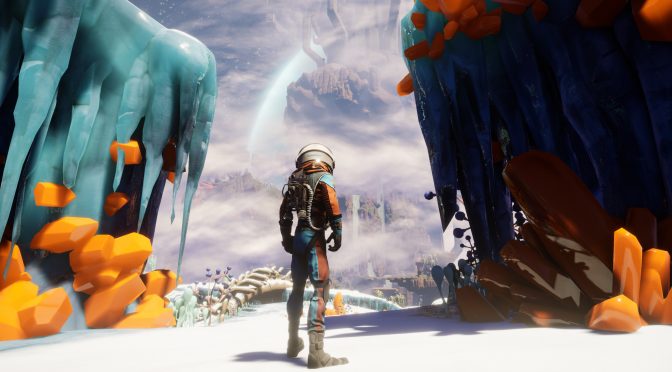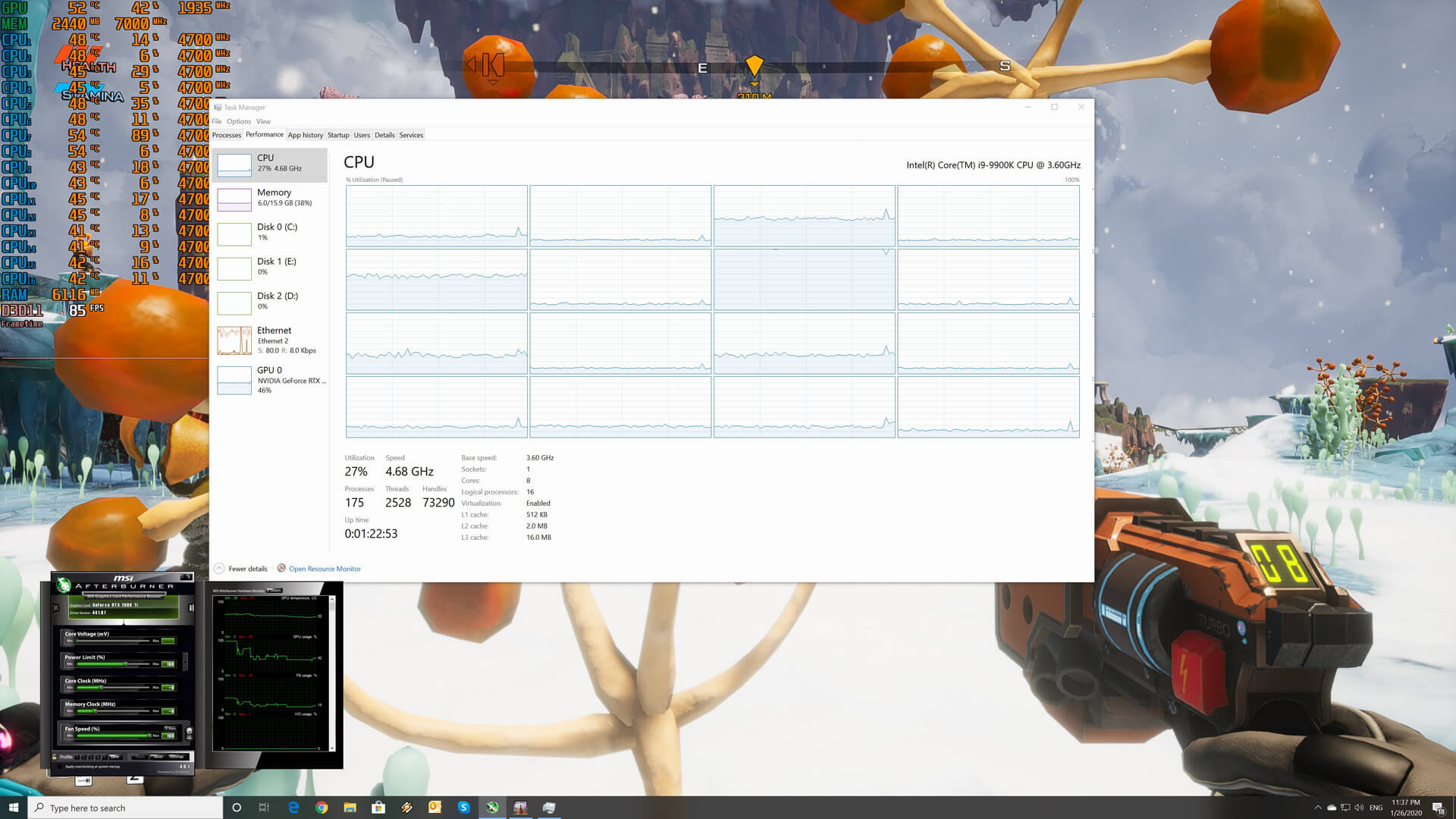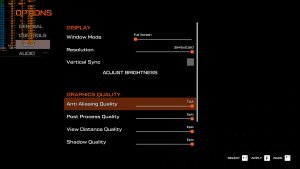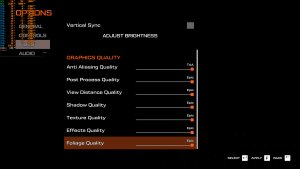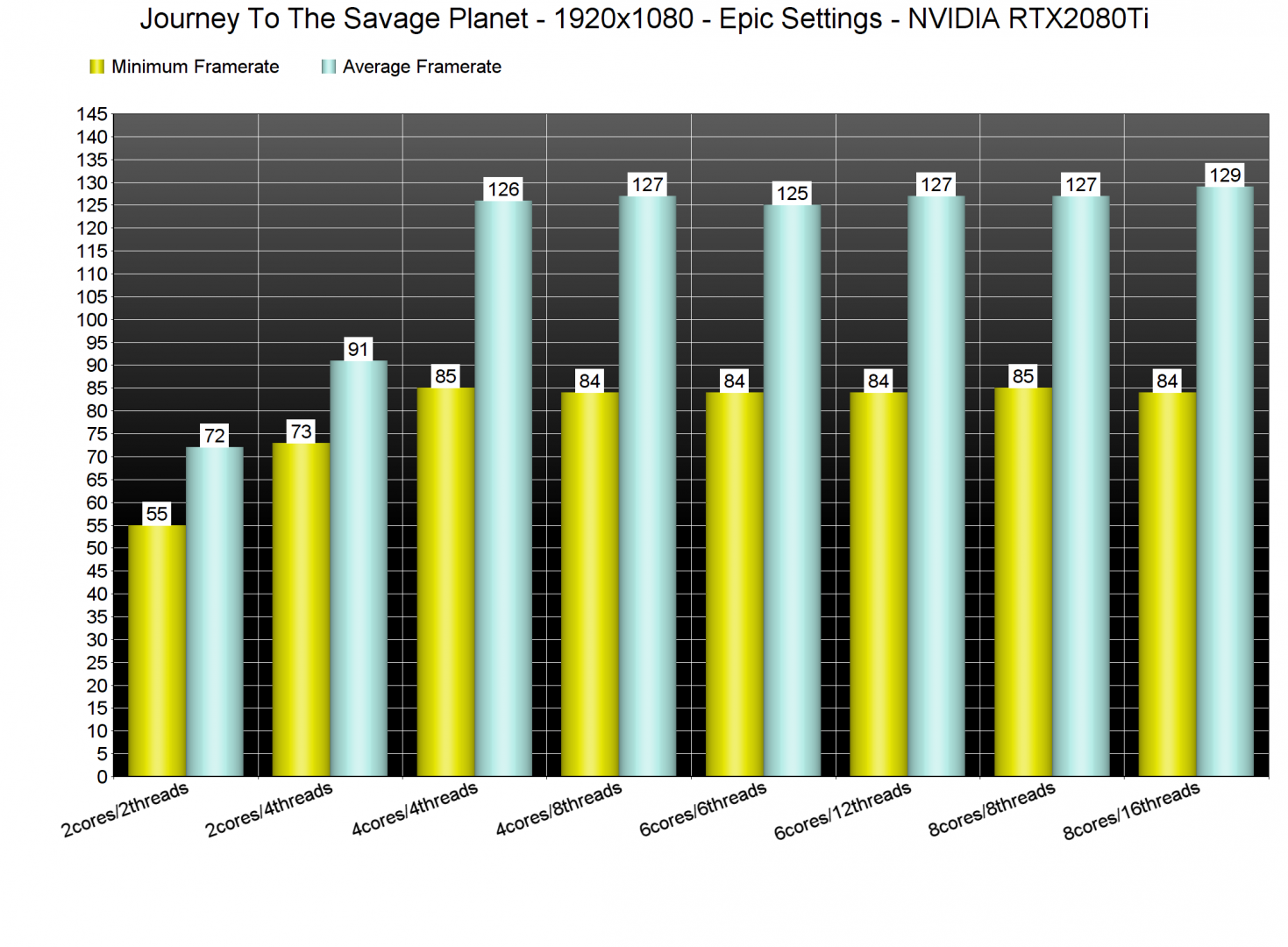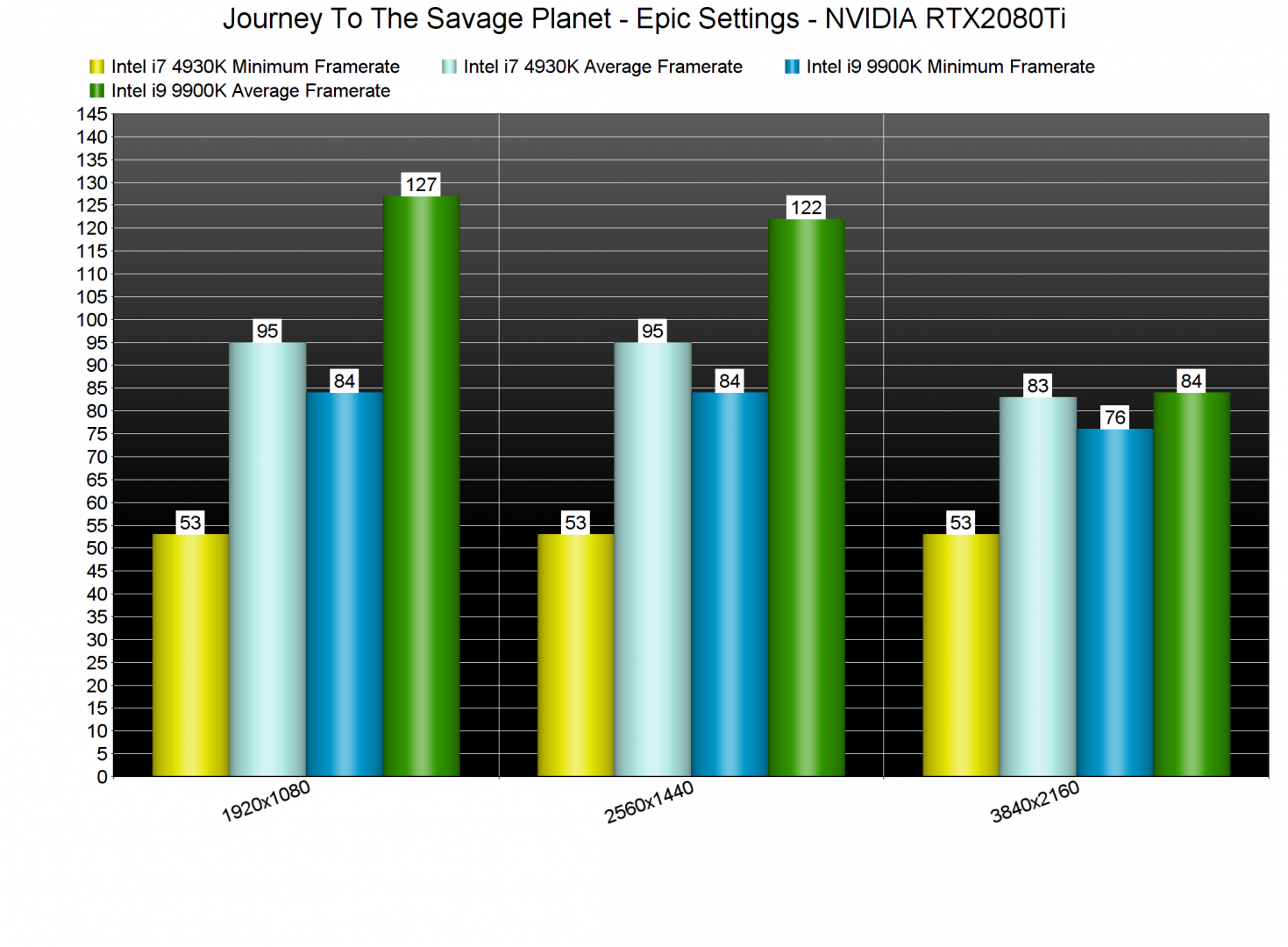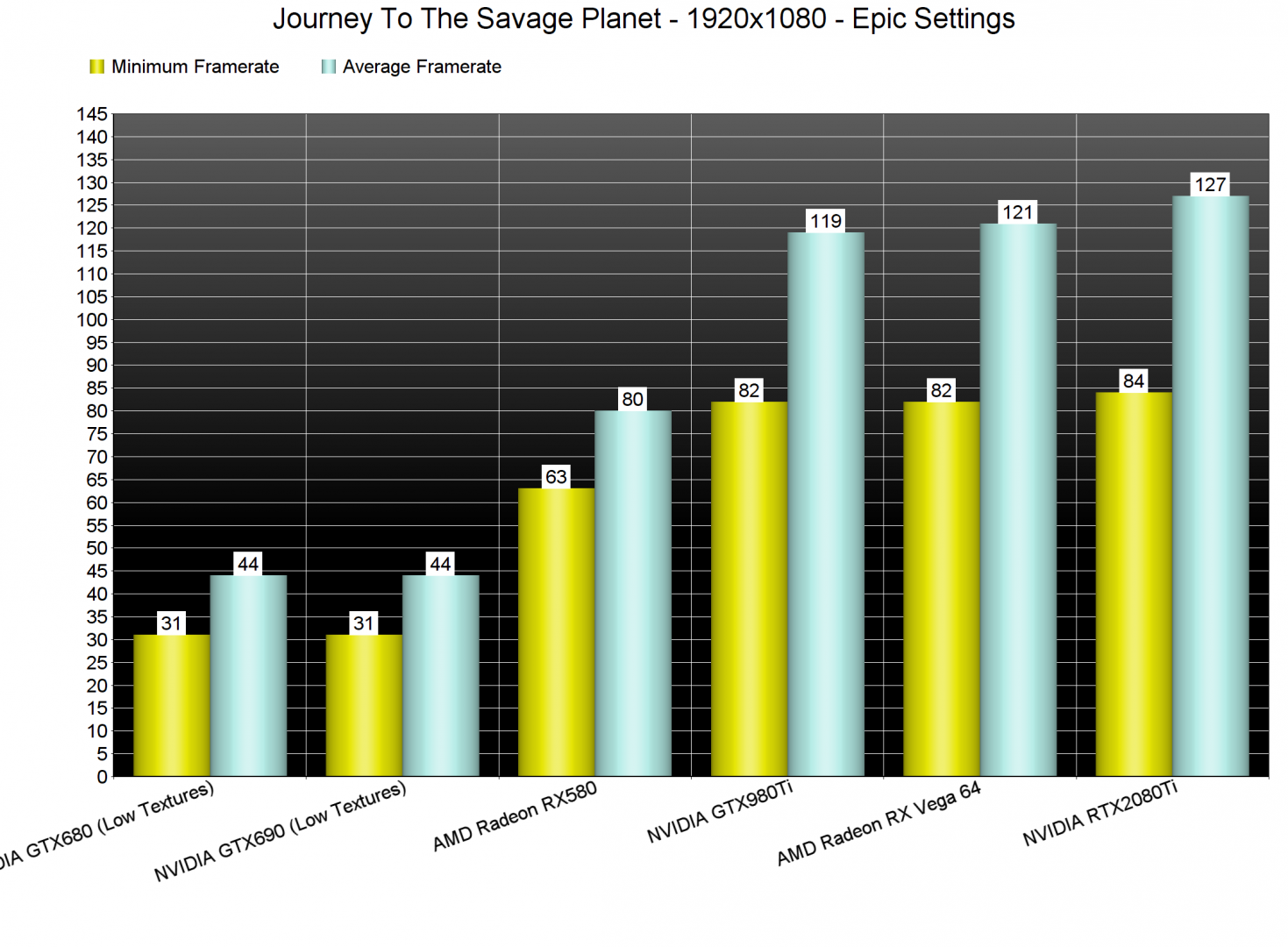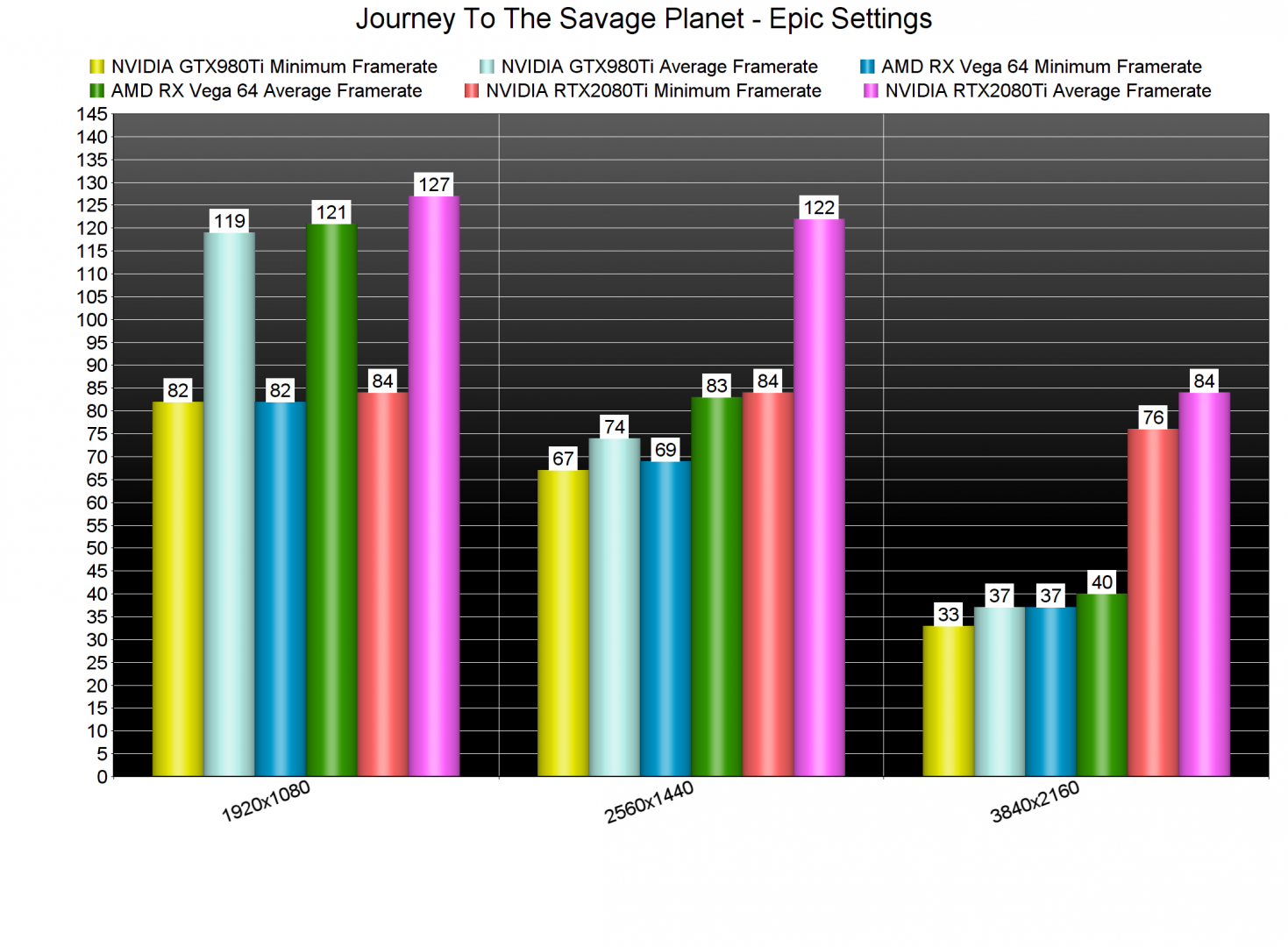505 Games has just released Journey To The Savage Planet on the Epic Games Store. Journey To The Savage Planet is a colorful, co-op adventure exploration game that uses Unreal Engine 4. As such, it’s time to benchmark it and see how it performs on the PC platform.
For this PC Performance Analysis, we used an Intel i9 9900K with 16GB of DDR4 at 3600Mhz, AMD’s Radeon RX580 and RX Vega 64, NVIDIA’s RTX 2080Ti, GTX980Ti and GTX690. We also used Windows 10 64-bit, the GeForce driver 441.87 and the Radeon Software Adrenalin 2020 Edition 20.1.3 drivers. NVIDIA has not included any SLI profile for this title, meaning that our GTX690 performed similarly to a single GTX680.
Typhoon Studios has added a few graphics settings to tweak. PC gamers can adjust the quality of Anti-Aliasing, Post Process, View Distance and Shadows. There are also options for Textures, Effects and Foliage.
Journey to the Savage Planet is using the DirectX 11 API and is mostly using one CPU core/thread. So, in order to find out how the game scales on multiple CPU threads, we simulated a dual-core, a quad-core and a hexa-core CPU. Without Hyper Threading, our simulated dual-core system was able to run the game with a minimum of 55fps and an average of 72fps at 1080p on Epic Settings. However, we experienced noticeable stuttering issues on this system. These stutters were eliminated the moment we enabled Hyper Threading. Furthermore, our minimum framerate increased to 73fps and our average to 91fps. On the other hand, the performance on our eight-core and simulated quad-core and six-core systems was identical.
Due to its single-threaded nature, Journey to the Savage Planet had performance issues on our Intel i7 4930K. This particular CPU was unable to offer a constant 60fps experience as there were drops below 55fps. Therefore, owners of older CPU systems may encounter performance issues with this title.
Thankfully, Journey to the Savage Planet does not require a high-end GPU. Most of our graphics cards were able to provide a smooth gaming experience at 1080p/Epic. Additionally, our GTX690 was able to provide a “console” experience.
At 2560×1440, our top three graphics cards were able to offer a 60fps experience. As for 4K, the only GPU that was able to run the game smoothly was the RTX2080Ti.
Graphics wise, Journey to the Savage Planet looks quite good, mainly due to its art style. However, the game suffers from major pop-in issues, even on Epic settings. Not only that, but there are a lot of “polygonal” objects. Overall interactivity and environmental destructibility is also limited.
All in all, Journey to the Savage Planet suffers from some optimization issues. While the game does not require a high-end GPU, it does require a CPU with high IPC. As said, this is mainly due to the game’s single-threaded nature. It will be interesting to see whether Typhoon Studios will release a post-launch performance patch. After all, the game should be running faster than it currently does on the PC.
Enjoy!

John is the founder and Editor in Chief at DSOGaming. He is a PC gaming fan and highly supports the modding and indie communities. Before creating DSOGaming, John worked on numerous gaming websites. While he is a die-hard PC gamer, his gaming roots can be found on consoles. John loved – and still does – the 16-bit consoles, and considers SNES to be one of the best consoles. Still, the PC platform won him over consoles. That was mainly due to 3DFX and its iconic dedicated 3D accelerator graphics card, Voodoo 2. John has also written a higher degree thesis on the “The Evolution of PC graphics cards.”
Contact: Email

